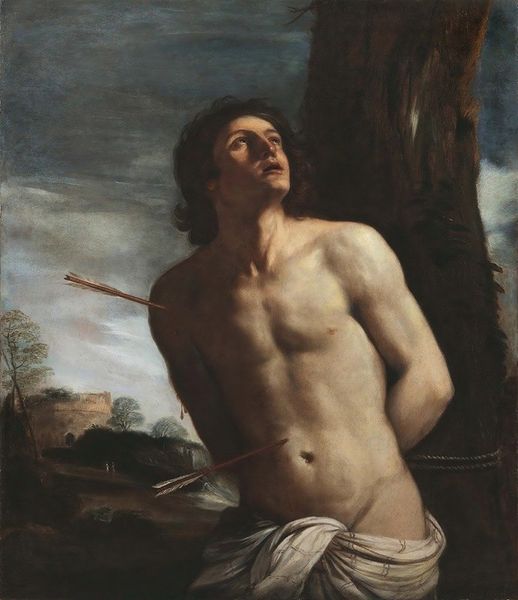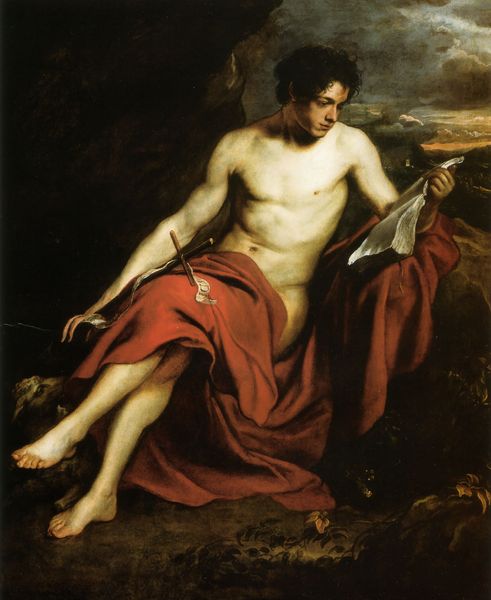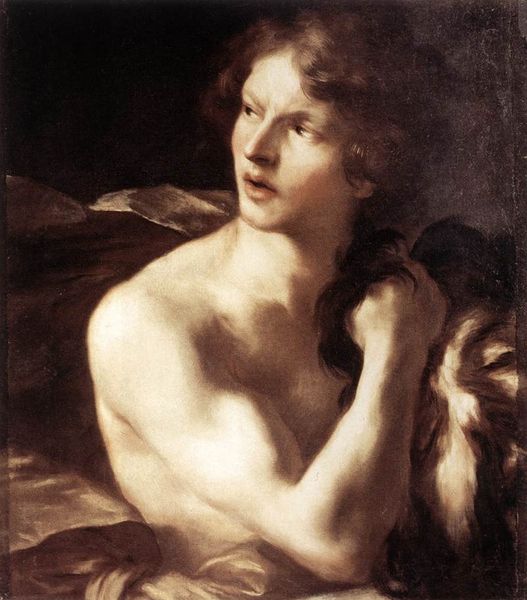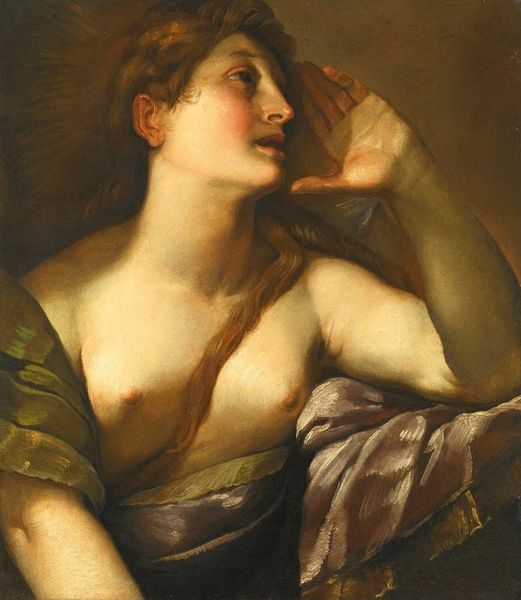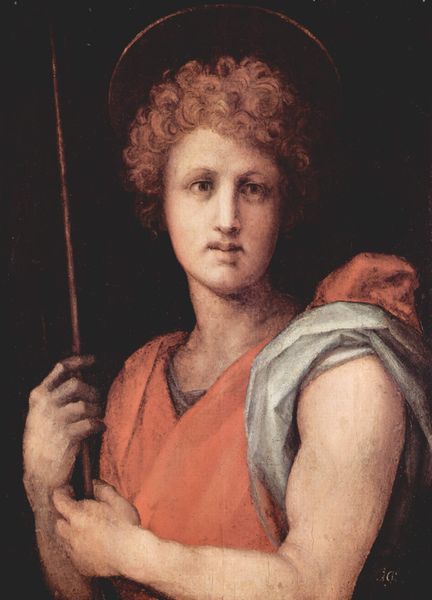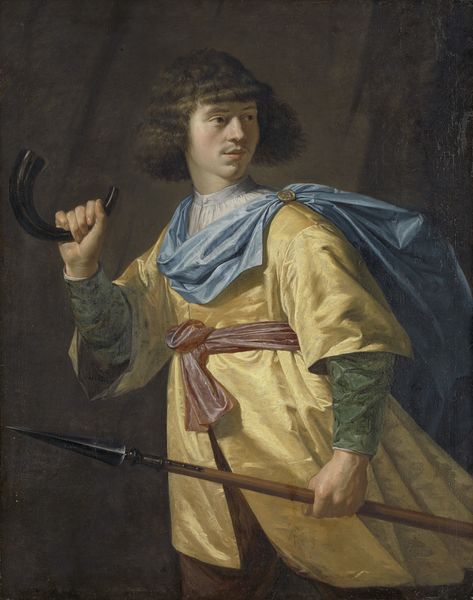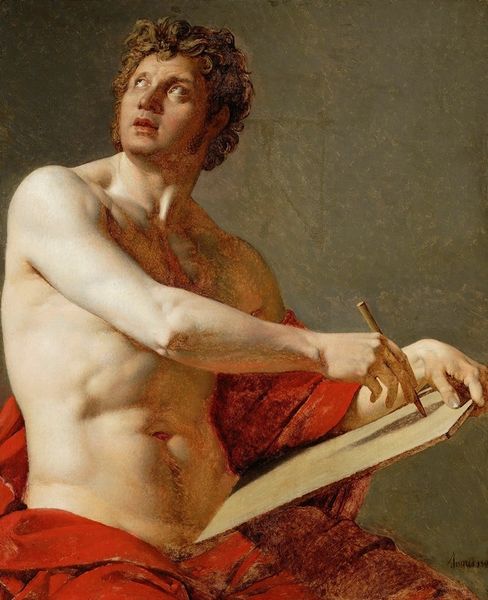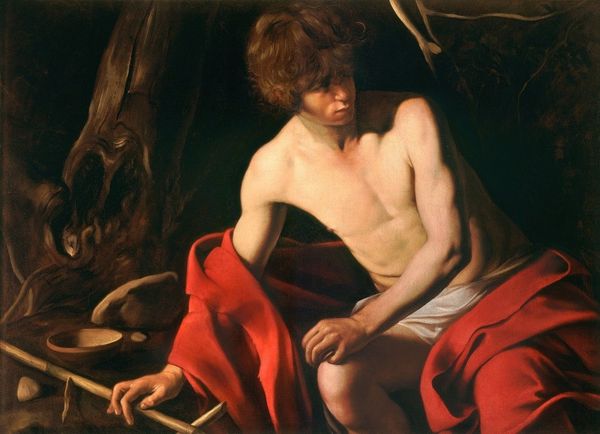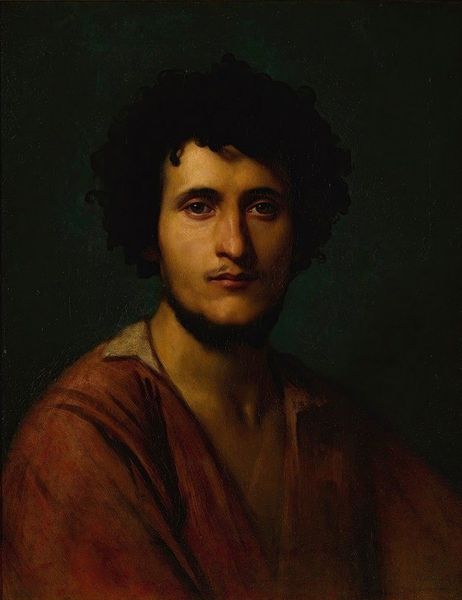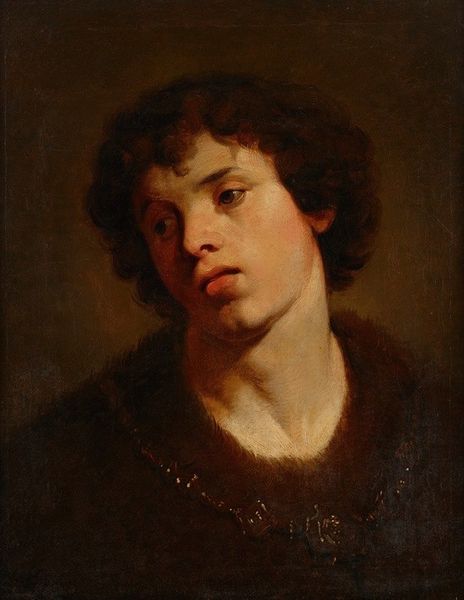
oil-paint
#
portrait
#
allegory
#
baroque
#
oil-paint
#
figuration
#
classicism
#
mythology
#
history-painting
#
nude
#
portrait art
Copyright: Public Domain: Artvee
Anthony van Dyck’s “Paris” is a masterful oil painting, showcasing a classical subject through the lens of 17th-century artistic skill. Van Dyck’s technique is immediately apparent in the textures he creates. The smooth, almost porcelain-like skin of Paris contrasts with the rich folds of the drapery, likely achieved through layering and blending of pigments. The application of paint is crucial here; it is a physical act that translates into a visual experience of depth and form. The luminous quality of the painting also suggests van Dyck's adept use of glazes, thin layers of transparent paint, to create a sense of glowing light within the artwork. Such paintings also relied on the workshop model, with apprentices preparing canvases and grinding pigments. Ultimately, the rich materiality of “Paris” is not just about aesthetic appeal. It also reflects the skilled labor, artistic traditions, and social context that were essential to its creation. By appreciating these elements, we gain a fuller understanding of van Dyck's achievement.
Comments
No comments
Be the first to comment and join the conversation on the ultimate creative platform.
